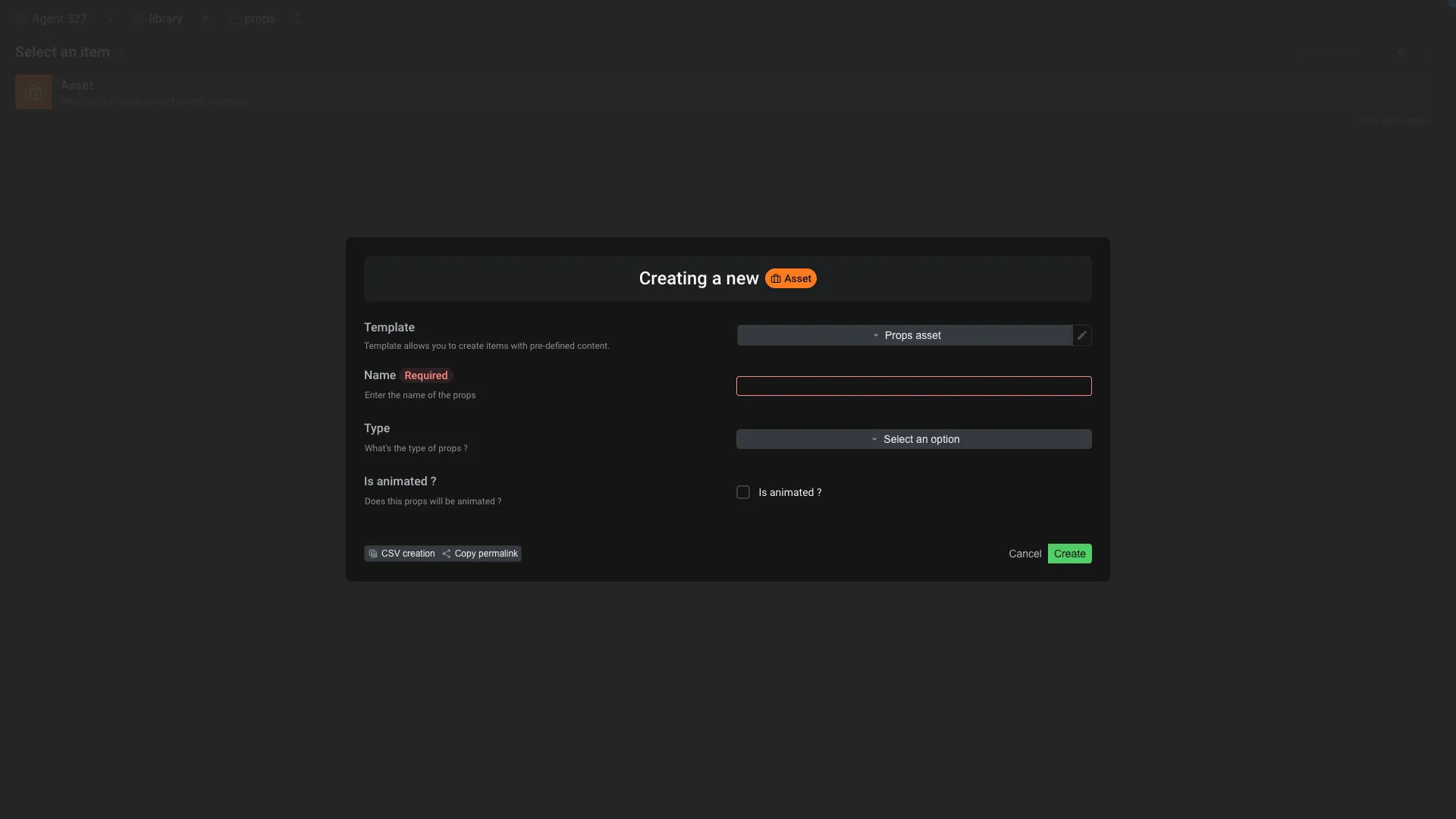Template
A Template is used to create other items with predefined data and structure.
Example: You can use a template to define the default structure of a shot, with its tasks.
A template can have a form, so when a user will create an item from this template, they will have to fill the form.

You can convert an item into a template using the Quickeditor application.
You can edit, synchronize, define template form, ... a using the Template editor application.
When an item is assigned to a template, a dedicated edge Template is created from the template to the item.
Usage
A templates are dependent of the context where they are used. By default templates are hidden at the root of the project.
Let's imagine this configuration :
Asset]:::Template Project -->|Child| TemplateB[Template B
Asset]:::Template
If you try to create an Asset at the root of the organisation, only Template A will be available.
If you try to create an Asset in the project, 2 templates will be available: Template A and Template B. In this case Template B will be selected by default because it is closer to the project. If two templates are at the same level, they will be ordered alphabetically.
Each item in a template have a special root property called createdFrom. All items created from a template will the same createdFrom property in order to track the origin of the item and be able to synchronize it back to the template.
Data
| Key | Type | Description |
|---|---|---|
name |
string |
Name of the template |
description |
string |
Description of the template |
templateData |
object |
Data of the template |
All the root data of the template will be copied to the new item, except the templateData property.
Template Data
The templateData object is a JSON object that contains the data of the template.
| Key | Type | Description |
|---|---|---|
type |
string |
Type of the item that will be created |
form |
object |
A custom form displayed to the user when they create the item |
Structure
Here is an example of a Shot's template :
templateData.type = 'Shot'] Template -->|Child| Layout[Task
Layout]:::Task Template -->|Child| Animation[Task
Animation]:::Task Template -->|Child| Lighting[Task
Lighting]:::Task
